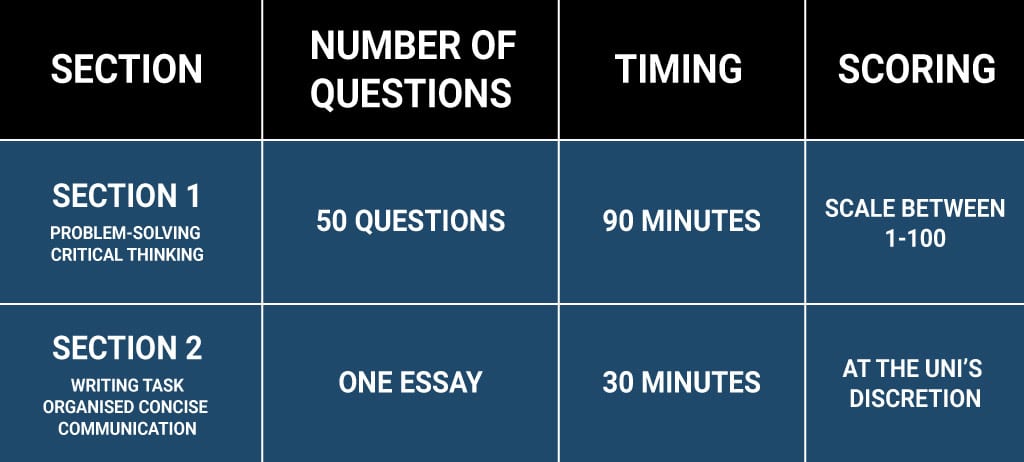Problem Solving questions are difficult to prepare for…
This is an accepted statement, and one that we do agree with, but we disagree with the naysayers who say it can’t be prepared for! To show you how, here are our top methods for revising and tackling problem-solving questions.
What is TSA Section 1?
Section 1 consists of 50 multiple-choice questions and assesses problem-solving skills, critical thinking skills, and the ability to reason using everyday language. The time allowed for this section is 90 minutes.
We explain the overall TSA structure and scoring in more depth in our TSA Overview article but the image below shows you how Section 1 fits in the test.

Section 1 is marked by a computer and scored on a scale of 1-100. Only around 10% of students score above 70.
UCL only uses Section 1 of the TSA, whereas Oxford uses Section 1 and 2 for the majority of TSA degrees except for Economics and Management and History and Economics.
TSA Section 1 Constructing Equations
Some problems in this section are very complex and you will need to get comfortable converting writing into equations. For example, when you read “Mark is twice as old as Jon“, you should register this as M=2J.
Once you get more comfortable doing this process, you can use it with more complex problems. Look at this example of a more complex equation using this method:

TSA Section 1 Diagrams
When a question asks about timetables, orders or sequences, draw out diagrams. By doing this, you can organise your thoughts and help make sense of the question.
Look at the question, then see the workings done to visualise the data – this method makes the question much easier. You don’t need to limit yourself to linear diagrams like this, you can draw Venn diagrams or tables; anything applicable to the question.

TSA Section 1 Spatial Reasoning
There are usually 1-2 spatial reasoning questions every year. They usually give nets for a shape or a patterned cuboid and ask which options are possible rotations.
The best thing you can do to prepare is to familiarise yourself with the basics of how cube nets work and what the effect of transformations are e.g. what happens if a shape is reflected in a mirror etc. It is also a good idea to try to learn to draw basic shapes like cubes from multiple angles if you can’t do so already.
Tips and Tricks
Read the options first
Despite the fact that you may have lots of data to contend with, the rule about looking at the options first still stands in this section. This will allow you to register what type of calculation you are required to make and what data you might need to look at for this.
Remember: OPTIONS -> QUESTION -> DATA/PASSAGE
Working with numbers
Percentages frequently make appearances in this section, and you should make yourself comfortable with them. You should get comfortable with increasing and decreasing by percentages and working out inverse percentages.
Looking to boost your TSA score?
The UniAdmissions TSA Programme will rapidly boost your score and triple your chances of succeeding in your application.
Our expert tutors will guide you through past papers in mock exam scenarios so that you are well-prepared by the time your exam comes around. UniAdmissions helps students refine and hone their abilities so that they’re exam-ready on test day for all aspects of the TSA exam.

